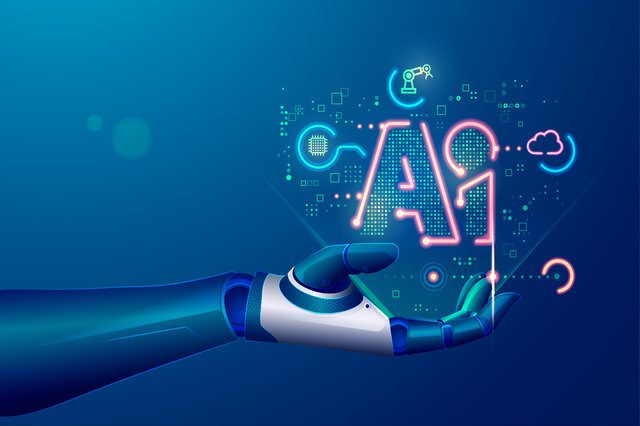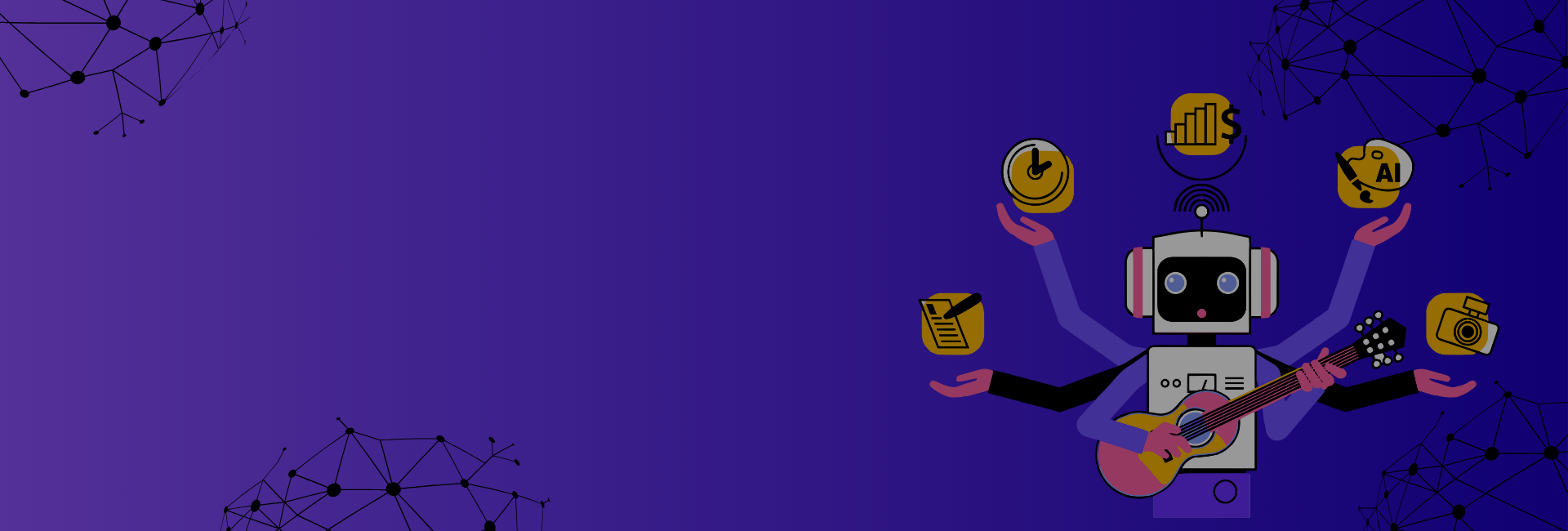As the field of software development continues to advance at an unprecedented rate, artificial intelligence (AI) has emerged as a transformative technology that is reshaping the way we build and deliver software solutions. AI tools are revolutionizing various aspects of the software development lifecycle, from coding and testing to deployment and maintenance.
Role of AI tools in software development?
AI tools have revolutionized software development by providing developers with smart, automated solutions that save time and effort. Some of the key roles of AI tools in software development are:
1. Code completion: Developers can use AI tools to autocomplete their code, saving them time and reducing the likelihood of errors.
2. Bug detection: AI tools can automatically detect bugs in code and suggest fixes, helping developers to write more reliable software and made the life of testers easier and better.
3. Predictive analytics: AI tools can provide developers with insights into how applications are likely to perform, allowing them to optimize code for better performance.
4. Natural Language Processing: AI tools can help developers analyze and interpret vast amounts of code and documentation, making it easier to understand complex systems and create new software.
5. Predictive Maintenance: AI tools can be used to monitor and analyze systems in real-time, identifying potential issues before they become significant problems.

10 Popular AI Tools Used in Software Development
Code Completion Tools & Intelligent IDEs:
AI-powered code completion tools and intelligent Integrated Development Environments (IDEs) can significantly boost developers’ productivity by suggesting code snippets, auto-completing code, and providing real-time feedback on code quality. There are already many tools in the market however their intelligence is increasing day by day with AI.
1. JetBrains’ IntelliJ IDEA:
IntelliJ IDEA is a popular Java IDE that incorporates AI-powered code completion capabilities. It offers intelligent code suggestions, code analysis, and refactoring tools, making it easier for developers to write high-quality code efficiently.
2. Tabnine:
Tabnine is an AI-powered code completion tool that integrates with various IDEs, including Visual Studio Code, IntelliJ IDEA, and PyCharm. It uses deep learning models to analyze code patterns and offer accurate code completions, saving developers time and reducing coding effort.
3. Kite:
Kite is an AI-powered coding assistant that integrates with popular IDEs like Visual Studio Code, Atom, and PyCharm. It offers real-time code completions, documentation, and code examples based on its understanding of millions of open-source code files.
4. Codota:
Codota is an AI-powered code completion tool that supports multiple programming languages, including Java, Python, and JavaScript. It uses machine learning to provide context-aware code suggestions and examples based on millions of open-source code snippets.
Automated Testing & QA Tools:
AI-driven software testing tools automate the process of generating test cases, detecting bugs, and analyzing code coverage. These tools, such as Test.ai, Applitools, and Parasoft, help improve the efficiency and effectiveness of software testing, leading to higher quality and more robust applications.
5. TestComplete:
TestComplete is a comprehensive automated testing tool that supports testing of desktop, web, and mobile applications. It offers a record and playback feature, scriptless testing, and supports multiple scripting languages like JavaScript, VBScript, and Python. TestComplete provides robust testing capabilities with built-in test management and reporting features.
6. Cucumber:
Cucumber is a behavior-driven development (BDD) tool that facilitates collaboration between developers, QA engineers, and business stakeholders. It allows writing executable specifications in a human-readable format, known as Gherkin, and supports automation of these specifications using various programming languages.
7. Test.ai:
The platform offered by Test.ai leverages artificial intelligence algorithms to analyze and understand the user interface of an application. It can automatically generate test cases, execute them, and provide feedback on the application’s behavior and performance. Test.ai aims to simplify the testing process by reducing the need for manual test script creation and maintenance. One of the key features of Test.ai is its ability to perform visual testing. It can detect changes in the user interface, identify visual bugs, and highlight discrepancies between expected and actual visual elements. This helps in ensuring the consistency and visual integrity of the application across different devices and platforms.
Machine Learning Tools & Frameworks:
Machine Learning (ML) frameworks, such as TensorFlow, PyTorch, and Scikit-learn, provide developers with the tools and algorithms necessary for building and deploying AI models. These frameworks facilitate tasks like image recognition, recommendation systems, predictive analytics, and more.
8. TensorFlow:
Provides a flexible architecture that allows developers to deploy models on a variety of platforms, including desktops, mobile devices, servers, and even on the cloud. It supports multiple programming languages such as Python, C++, and JavaScript, making it accessible to a wide range of developers.
9. PyTorch:
It is an open-source machine learning framework developed by Facebook’s AI Research lab. It is designed to provide a flexible and efficient platform for building deep learning models. PyTorch offers a dynamic computational graph, which means that computations are defined on-the-fly during runtime. This flexibility allows for more intuitive and interactive model development, as developers can easily modify and debug their models.
10. Scikit-learn:
It also known as sklearn, is a popular and widely used open-source machine learning library for Python. It provides a comprehensive set of tools for various machine learning tasks, including classification, regression, clustering, dimensionality reduction, model selection, and preprocessing of data.
Automated Code Review Tools:
AI-based code review tools, like DeepCode and CodeClimate, analyze codebases to identify potential bugs, security vulnerabilities, and code smells. These tools save developers time by automating the review process and providing actionable insights for improving code quality.
Chatbot Development Platforms:
Chatbot development platforms, including Dialogflow, IBM Watson Assistant, and Microsoft Bot Framework, enable developers to create intelligent conversational agents. These tools leverage AI techniques like natural language understanding and machine learning to build interactive chatbots for various applications, from customer support to virtual assistants.
Continuous Integration and Delivery (CI/CD) with AI Platform:
AI-powered CI/CD platforms, such as Jenkins X and CircleCI, integrate machine learning algorithms to optimize the software release process. These tools automate tasks like code analysis, testing, and deployment, enabling faster and more reliable software delivery.
Automated Documentation Generation Tools:
AI tools like Natural Docs and Doxygen can automatically generate documentation by analyzing code comments and structure. These tools help developers save time and ensure up-to-date and well-documented software projects.
Intelligent Error Monitoring Tools:
AI-driven error monitoring platforms, like Sentry and Rollbar, analyze application logs and provide real-time insights into errors and exceptions. These tools help developers quickly identify and resolve issues, improving application reliability and user experience.
Automated Code Generation Tools:
AI-powered code generation tools, such as Kite and Codota, leverage machine learning to suggest code snippets and generate boilerplate code. These tools accelerate development and reduce repetitive coding tasks.
Automated Dependency Management Tools:
AI-based dependency management tools, like DeepCode and Snyk, analyze codebases and identify vulnerabilities and outdated dependencies. These tools help developers ensure secure and up-to-date software components in their projects.
Intelligent Code Refactoring Tools:
AI-driven code refactoring tools, such as CodeClimate and ReSharper, automatically suggest code improvements and refactorings. These tools help developers optimize code readability, maintainability, and performance.
Automated Data Labeling Tools:
AI tools like Labelbox and Dataloop provide automated data labeling capabilities, essential for training machine learning models. These tools help streamline the data annotation process, reducing the time and effort required to create labeled datasets.
AI-based Code Search and Knowledge Sharing Tools:
AI-powered code search engines, such as Sourcegraph and Codota, employ machine learning algorithms to help developers find relevant code snippets, libraries, and documentation. These tools promote knowledge sharing and accelerate development by facilitating code reuse.
Variants of Algorithms
Supervised Learning: Utilizes labeled data to learn the relationship between input and output
Unsupervised Learning: Operates on unlabeled data to uncover hidden patterns
Semi-Supervised Learning: Abundant unlabeled data along with a smaller set of labeled data
For image generation, the choice of algorithm can depend on the specific requirements of the task. Here are some popular algorithms,
1. Generative Adversarial Networks (GANs)
GANs consist of a Generator and a Discriminator that works against each other, allowing for the generation of very realistic images. They are widely used in a range of applications from art creation to medical imaging.
2. Variationally Autoencoders (VAEs)
VAEs are good at generating new data that are similar to the training data, making them useful for tasks like image denoising or inpainting.
3. Convolutional Neural Networks (CNNs)
While primarily used for image classification, CNNs can be adapted for image generation tasks, especially when the generated image needs to have textural or structural similarity to a given input.
4. Recurrent Neural Networks (RNNs)
RNNs are designed to handle sequences, making them suitable for tasks that require temporal continuity or different poses and angles of the same image.
5. Fractal Algorithms
Fractals use mathematical equations to create complex structures, making them suitable for generating natural-looking images like landscapes or clouds.
For Natural Language Processing (NLP) and text generation, the choice of algorithm can depend on the specific requirements of the task. Here are some popular algorithms,
6. Transformers (e.g., GPT, BERT)
Transformers have shown state-of-the-art results in a wide range of NLP tasks. They are highly parallelizable, making them efficient to train and deploy.
7. Long Short-Term Memory (LSTM)
LSTMs are particularly good at capturing long-term dependencies in sequences, which makes them well-suited for tasks like machine translation and text summarization.
8. Recurrent Neural Networks (RNNs)
While generally considered less effective than LSTMs and Transformers for most tasks, vanilla RNNs can still be used for simpler tasks and are computationally less expensive.
9. Hidden Markov Models (HMMs)
HMMs are statistical models that are good for tasks where the current output only depends on the current and immediate previous states, making them less suitable for tasks requiring an understanding of longer contexts.
10. N-gram Models
N-gram models are simple and fast, used in tasks where the complexity and computational cost of neural models are not justified.
11. Rule-Based Systems
For very constrained tasks, rule-based systems can be the most efficient. They are easy to build and do not require data for training.
Where will AI be used in the 2025 and beyond?
1. Healthcare and Biotechnology
Personalized Medicine: AI will enable tailored treatment plans based on genetic and health data.
Diagnostics: AI-powered tools will enhance early detection of diseases like cancer using imaging and predictive analytics.
Drug Discovery: Accelerating the development of new drugs by simulating biological processes and identifying viable compounds.
Robotic Surgeries: Advanced robotic systems integrated with AI will perform minimally invasive surgeries with higher precision.
Mental Health: Chatbots and virtual therapists will support mental well-being with real-time, scalable solutions.
2. Education and Learning
Adaptive Learning Platforms: AI will create personalized learning paths for students based on their performance and preferences.
Virtual Tutors: AI tutors will provide real-time support in various subjects, enhancing accessibility.
Assessment Tools: Automated grading systems will save time and offer unbiased evaluations.
Lifelong Learning: Platforms will use AI to recommend upskilling and reskilling programs based on career goals and market demand.
3. Business and Enterprise
AI-Driven Decision Making: Predictive analytics will guide strategies in marketing, sales, and operations.
Chatbots and Virtual Assistants: Automating customer service, reducing response times, and increasing efficiency.
Supply Chain Optimization: AI will improve demand forecasting, logistics, and inventory management.
Fraud Detection: Real-time monitoring and anomaly detection in financial transactions will combat fraud.
4. Transportation and Logistics
Autonomous Vehicles: Self-driving cars, trucks, and drones will redefine transportation and last-mile delivery.
Smart Traffic Management: AI will optimize traffic flow, reducing congestion and emissions.
Fleet Management: Predictive maintenance and route optimization will improve efficiency for logistics companies.
Conclusion:
Artificial intelligence is a game changer in the software development landscape, offering developers a range of powerful tools to enhance their productivity, improve code quality, and unlock new possibilities. The 10 AI tools mentioned in this article can play a vital role in enabling software developers to build smarter applications, streamline development processes, and stay ahead in the ever-evolving world of technology. Embracing these AI tools in 2025 and beyond can empower developers to create innovative accelerated solutions and drive the future of software development.
Common FAQs on AI tools for Software Development
Q.1) What are the key benefits of using AI Tools in Software Development?
The key benefits of using AI Tools in Software Development are:
1. Enhanced Productivity: AI Tools automate routine tasks like code generation, testing, and debugging, freeing up developers’ time for more important tasks like innovation and design.
2. Improved Code Quality: AI Tools can help identify bugs and errors before they lead to costly failures, ensuring better code quality and reliability.
3. Faster Time-to-Market: AI Tools enable fast prototyping and iteration, helping developers bring products to market faster.
4. Increased Efficiency: AI Tools can optimize system processes, reducing computational and infrastructure costs significantly.
Q.2) What are the pricing models for AI Tools in Software Development?
Pricing models for AI Tools in Software Development may vary based on the tool’s complexity, features, and usage. Some tools may offer free versions with limited features and functionality, while others may require monthly or annual subscriptions. Developers should carefully evaluate the pricing options and choose tools that align with their budget and development needs.
Q.3) What are the common issues faced while using AI Tools in Software Development?
Common issues faced while using AI Tools in Software Development are:
1. Integration Issues: AI Tools may require integration with other tools or platforms, which may cause compatibility issues.
2. Data Quality Issues: The performance of AI Tools heavily relies on the quality of the data used to train the algorithms, which may lead to inaccurate results.
3. Over-reliance on AI Tools: Over-reliance on AI Tools may result in developers overlooking important issues and making errors.
4. Privacy and Security Concerns: AI Tools may require access to sensitive data, which may raise privacy and security concerns.




